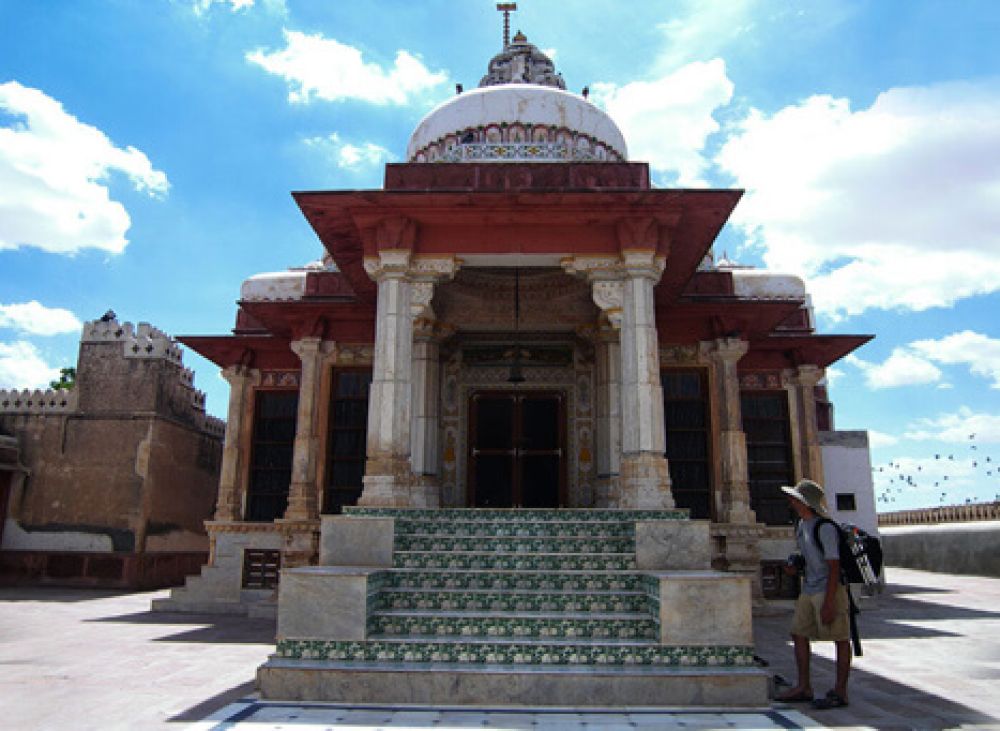

The Bhandasar Jain Temple, located in Bikaner, Rajasthan, is one of the most revered and exquisite Jain temples in India. This sublime piece of architecture, dedicated to the fifth Tirthankara, Sumatinatha, is renowned for its stunning artwork, intricate carvings, and the extensive use of vibrant colors. The temple’s history dates back to the 15th century, making it both a significant spiritual destination and a historical monument.
The Bhandasar Jain Temple was constructed in 1468 by Bhandasa Oswal, a prosperous merchant and a devout Jain. It took about 5 years to complete and is primarily known for its use of beautiful red sandstone and the finest quality of marble and decorative paintwork. Over centuries, the temple has attracted pilgrims, historians, and art lovers from across the world, mesmerizing them with its detailed frescoes and exquisite gold leaf work.
The appeal of Bhandasar Jain Temple as a tourist destination has grown significantly over the years. Initially, its primary visitors were Jain pilgrims traveling to pay homage. However, with the increase in cultural and historical tourism in India, the temple began to attract a broader audience, fascinated by both its religious significance and architectural grandeur.
In recent times, tourism at the Bhandasar Jain Temple has been robust, becoming one of the key attractions for visitors to Bikaner. People come not only to witness the beautifully decorated interiors but also to learn about Jainism and the temple's place in it.
The Bhandasar Jain Temple is a testament to Rajasthan's commitment to preserving its heritage. Continuous efforts are made to maintain the temple's original structure and artwork. The Archaeological Survey of India and various Jain organizations play a crucial role in the conservation process, ensuring the temple remains an authentic reflection of its time.
In the current tourism landscape, there has been a shift towards sustainable and experience-based travel. Visitors to the Bhandasar Jain Temple now often engage with local guides who provide deep insights into the temple's history and Jain principles. Experiencing the temple during religious festivities can offer an even richer understanding of its cultural importance.
Additionally, tourists are increasingly combining their visit to the Bhandasar Jain Temple with nearby attractions such as the Junagarh Fort, the Karni Mata Temple, and the National Research Centre on Camel for a more holistic experience of Bikaner and its diverse offerings.
For those planning a visit, the Bhandasar Jain Temple is open to visitors throughout the year. It is recommended to visit during the early hours of the day to avoid the heat and to have a peaceful experience. Photography is allowed, but respect for the religious practices within the temple's premises is expected. The best time to visit is between October and March when the weather in Rajasthan is cooler.
In conclusion, the Bhandasar Jain Temple stands not only as a beacon of spirituality but also as a significant cultural and historical landmark in India's tourism scene. Its continued allure lies in its ability to offer an enthralling blend of ancient artistry, religious devotion, and timeless history.